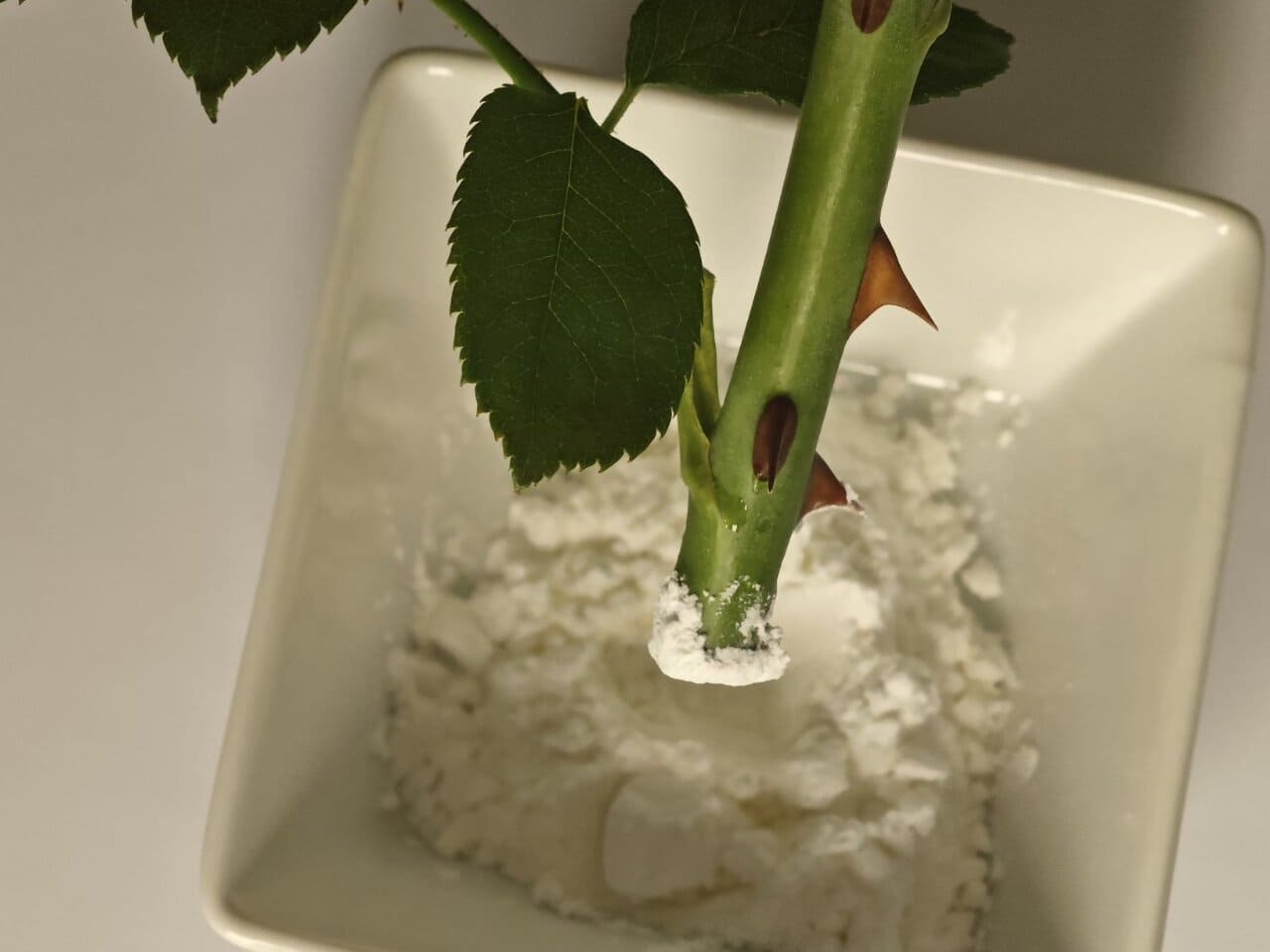Growing roses from cuttings is a rewarding experience that allows you to cultivate beautiful blooms with your hands. Imagine the pride in watching a vibrant rose grow, knowing you nurtured it from a humble cutting. In this guide, I’ll share my journey and tips on successfully growing roses from cuttings, transforming a simple stem into a flourishing rosebush.
The Benefits of Self-Rooted Roses
I remember the first time I decided to grow roses from cuttings. The thought of creating a self-rooted rose, which doesn’t produce wild shoots and adapts better to local conditions, was incredibly appealing. Unlike grafted roses, self-rooted roses are more durable and can thrive in various soil types. This method is particularly beneficial in regions with less harsh climates, like my garden near Moscow, where native roots can flourish beautifully.

When is the Best Time to Take Rose Cuttings?
Timing is crucial when it comes to taking rose cuttings. I learned that the best period is from the complete formation of the bud to the end of flowering, usually in July. Taking cuttings too early means the wood needs to mature more, while cutting too late means the buds will start to open, diverting nutrients away from rooting. To maximize success, I cut my rose cuttings in the early morning when the plant tissues are rich in water, ensuring better hydration for the cuttings.
How to Cut and Root Rose Cuttings: A Step-by-Step Guide
Stage One: Pruning and Rooting
Step 1: Prune the Rose Stem
I carefully selected a healthy rose stem and cut it into sections. Each section, or cutting, should be about one internode long, meaning each piece of stem has two leaves.

Step 2: Make the Bottom Cut
The next step is to make a precise cut below a bud where the leaf ends. This cut should be perpendicular and made with a sharp knife to prevent contamination of the plant tissues.

Step 3: Apply Growth Stimulator
To encourage root growth, I dipped the cut end of the stem into a growth stimulator powder. This step is essential as it promotes active root formation, giving the cutting a better chance to thrive.

Step 4: Plant the Cutting
The cutting is then inserted into a substrate that is both moisture-absorbing and breathable. After planting, I covered the cuttings with a thin film in a shaded garden area, ensuring there were no holes to retain the necessary moisture. Daily spraying with water before and after covering helped maintain optimal humidity levels.

Get Your Free Lunar Gardener's Calendar 2025!
Join the Lunar Gardening Revolution! Subscribe now to receive our exclusive Free Lunar Gardener’s Calendar for 2025. Harness the power of the moon to optimize your planting, nurturing, and harvesting.
Stage Two: Transplanting the Sprouted Cutting
Step 5: Transplant to a Larger Container
As the cuttings began to sprout roots, it was time to move them to a larger “house.” Early transplantation is vital since small roots are more adaptable and less likely to be damaged.
Step 6: Handle with Care
During transplantation, handling the delicate roots with extreme care is crucial. Even the slightest damage can be detrimental to the cutting’s development.
Step 7: Plant in Fertile Soil and Water
I planted the sprouted cuttings in fertile soil, ensuring they had enough nutrients to grow strong by autumn. Watering them abundantly helped establish the roots in their new environment.
My Personal Experience and Tips
Growing roses from cuttings has been a fulfilling journey. Here are some personal tips to enhance your success:
- Choose Healthy Stems: Select stems that are healthy and free from diseases to increase the chances of successful rooting.
- Maintain Humidity: Keeping the cuttings in a humid environment is critical. Regular misting and proper covering helped retain the necessary moisture.
- Be Patient: Rooting can take time. Patience is essential, as rushing the process can harm the delicate cuttings.
Frequently Asked Questions
The optimal time to take rose cuttings is early spring or late summer when the plant is actively growing. These periods help ensure the cuttings have plenty of energy to root successfully.
First, select healthy, disease-free stems to prepare your rose cuttings. Trim the cutting to about 4-6 inches, remove the lower leaves, and dip the cut end in a rooting hormone.
The essential tools include a clean, sharp pair of pruning shears, a container for the cuttings, rooting hormone, and a well-draining potting mix. These items ensure that your cuttings have the best chance for healthy root development.
Typically, rose cuttings take 4 to 8 weeks to form roots, though this can vary with environmental conditions such as temperature and humidity. Keeping the cuttings in a warm, moist environment is key to speeding up the rooting process.
Both options work well depending on your climate and setup. Many gardeners start their cuttings indoors in a controlled environment, then transplant them outdoors after the roots have developed. This approach minimizes risks from extreme weather conditions.
A well-draining, loamy soil mixed with perlite or sand is ideal for rooting rose cuttings. This mixture ensures proper aeration and moisture retention, which is critical for developing strong roots.
After planting, keep the soil consistently moist but not waterlogged. Place the cuttings in a location with bright, indirect light and avoid direct sunlight until they have established roots. This gradual exposure helps reduce stress and encourages steady growth.
Common pitfalls include using unsterilized tools, overwatering, or taking cuttings from unhealthy plants. Ensuring your materials are clean and selecting vigorous stems is essential for a successful propagation.
Look for signs of new leaf growth and gently tug on the cutting. If you feel resistance, it’s a good indication that roots have developed. Patience is essential; some cuttings might take longer, so monitor them over several weeks.
Certain rose varieties are known for their ease of propagation. Hybrid teas and floribundas, for example, often root more readily than more delicate species. Experimenting with different varieties can help you find the one that works best for your garden.
Let's grow new roses
There’s a unique satisfaction in growing roses from cuttings, witnessing their transformation from a simple stem to a blooming rosebush. With the proper techniques and patience, you can enjoy the beauty and fragrance of roses grown with your hands. Whether you’re a seasoned gardener or a beginner, this method offers a delightful and rewarding experience. So, roll up your sleeves, grab your gardening tools, and start growing roses from cuttings. The blooms you nurture will testify to your dedication and love for gardening.





